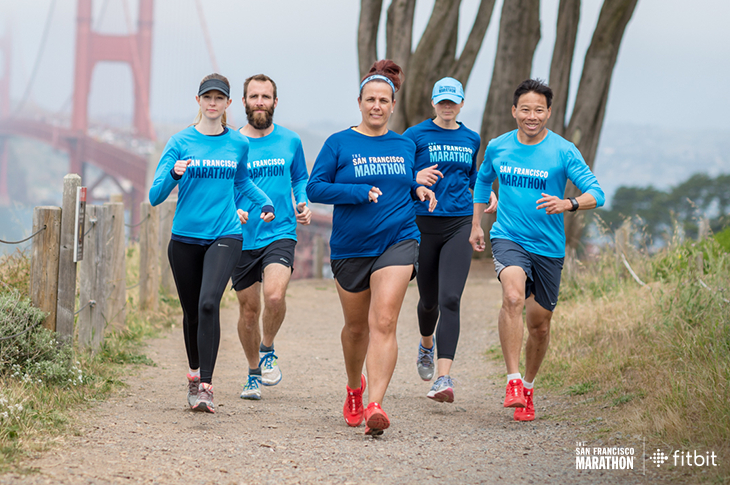 When it comes to running a better marathon, threshold training (when you run sustaining 80-87% of your maximum heart rate, at a pace you aim to maintain during the marathon) can be one of your most important tools. You’re teaching your body to run at your ideal speed, which allows your muscles to get comfortable while running fast, you’re coaching your mind to believe you can run your goal pace, and you’re training in a way that nearly mimics your race. Threshold work is specific to marathons, too: There aren’t any breaks (as with interval training), and you are running with the same amount of effort you’d put into your race.
When it comes to running a better marathon, threshold training (when you run sustaining 80-87% of your maximum heart rate, at a pace you aim to maintain during the marathon) can be one of your most important tools. You’re teaching your body to run at your ideal speed, which allows your muscles to get comfortable while running fast, you’re coaching your mind to believe you can run your goal pace, and you’re training in a way that nearly mimics your race. Threshold work is specific to marathons, too: There aren’t any breaks (as with interval training), and you are running with the same amount of effort you’d put into your race.
An added bonus? Knowing you have run 15 miles at marathon pace before the big day delivers a major confidence boost. You’ll also be able to go farther at marathon pace with each week that goes by, making your goal more and more attainable. In my opinion, threshold running is the greatest predictor of marathon fitness, and the best training tool for running your fastest 26.2 miles yet.
Ready to get started? Here’s what you need to do:
Reschedule Your Week
Incorporate at least one threshold day into your week, and space it out accordingly with your other training runs. Start by including one short interval day (let’s say Tuesday), and then a harder threshold day on Thursday (so there’s an easier day in between), and a long run on Sunday.
Start with a Doable Distance
Choose a manageable distance that makes sense for your current fitness level to start. If you’re completely new to threshold running, that could mean two to four miles.
Slowly Increase Mileage
Gradually build your distance by adding two miles to your threshold runs each week. I aim to complete three 15-mile threshold runs prior to competing in a marathon, but I would recommend building up to at least one 12-mile threshold run performed at 80-87% of your maximum heart rate.
Relax Your Body
Focus on relaxing as much as you can while still running fast. It’s about efficiency: Keep every muscle you are not using for running relaxed.
Maintain Your Effort
The easiest way to make sure you are training hard enough is to use the Fitbit Surge or Fitbit Charge HR to track your heart rate throughout your run. It is also easy to run harder than you should for the first couple of miles, and you don’t want to lose steam.
Are you ready to go the distance? Fitbit is gearing up for The San Francisco Marathon on July 23, 2017. Share your next marathon goal by joining the conversation below.
This information is for educational purposes only and is not intended as a substitute for medical diagnosis or treatment. You should not use this information to diagnose or treat a health problem or condition. Always check with your doctor before changing your diet, altering your sleep habits, taking supplements, or starting a new fitness routine.

This question is not for running a marathon. It is for a 10K training. When running on the treadmill to prepare for the 10K, should you run with your heart rate in peak zone? If so, what percent of the time?
Wasn’t sure if the author of the article replies or was this to ask Fitbit questions